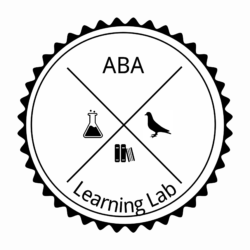By James Macon, M.Ed., BCBA
As a young and eager undergraduate student at Western Michigan University, I still remember my first day of PSY 360 (it’s called PSY 1400 now), Concepts of Behavior Analysis. Dr. Richard Malott was there to introduce himself, and after a very brief introduction and story (detailed below), he proceeded to warn us that should we choose to stay in his class, it would be filled with extreme hardship, misery, constant work and study, weekly quizzes, and the expectation that we would memorize some 300 definitions word for word. Gulp. If we wanted to continue studying behavior analysis and wanted an easier route, we could opt to choose the other professor (also of good acclaim) on campus.
At the time, we were scared. Why wouldn’t we be? Traditional education had taught me that education, while valuable, had to be consumed by listening to someone speak (usually at a lectern, in a monotone voice, for 45 minute chunks of time) and then by recording everything I thought might be important in my notebook. From there, I would have to read a lot of dry material, over and over again, and then repeat. So when Dr. Malott warned us of the hardship ahead, it sounded like the same-old that I was already used to. Luckily for the class, for future members and graduates of his Behavior Analysis Training System (BATS), and for the field of behavior analysis at large, Dr. Malott’s program was radically different from the traditional education model.
What was so different? He used behavior analysis to teach behavior analysis. He designed a behavioral system, encompassing what the ultimate accomplishment of the system would be… competent behavior analysts… and specified standards for quality, quantity, timeliness, and costs for student and teacher performance. He specified a process for the class and engineered contingencies to promote excellent academic behavior. And he ensured we all had the right equipment in order to perform.
Equipment doesn’t just mean computers and electronics, of course. Our “equipment” came from the bookstore (after exchanging the requisite arm and leg to the cashier) and included a copy of Principles of Behavior, 3 dry-erase projector sheets (for diagramming contingencies), a year-at-a-glance self-management graph for studying behavior, several color-coded contingency diagramming checklists and job aids, and all the definitions that we would be expected to learn over the course of the semester.
Dr. Malott’s textbook, Principles of Behavior, was also radically different. It read like a story, and was entertaining. It used normal language to tell stories of behavior analysis and science. It then provided models for the technical jargon and contingencies we would need to diagram, and provided us opportunities to practice. Our weekly “year at a glance” self-management graphs were used to track our scores on weekly quizzes over time, and provided graphic feedback on how well we were doing. All the different pieces and moving parts of his class seemed to just “fit” and complement each other, as a good system should.
The architecture he used is a part of behavior analysis, although we’re more likely to call it OBM, or Behavioral Systems Analysis (or a Goal-Directed System Design, as Dr. Malott called it). The framework is similar regardless of what we call it though… we specify what we want our system to produce, we ensure our performers have the right tools, we engineer the contingencies to ensure we get the performance we want, and we provide feedback. When done right, any average Johnny-Student should be able to enter the system an untrained, unspectacular student, and come out the other end a shiny, well trained, competent Behavior Analyst. That’s what the system is designed to do.
Using behavior analysis to teach behavior analysis is still somewhat of a novel concept today, unfortunately. One only has to look at the largest text book used to teach behavior analysis (hint, it has a white cover) to see the contrast. To be clear, I’m not suggesting that one is better than the other… there are many impassioned fans of that white covered book… and it’s great. It just doesn’t use behavior analysis to teach behavior analysis.
This brings me to the point of this article. Just having content experts or information available doesn’t ensure we learn or perform as intended, just as having sheet metal and engineers doesn’t ensure we will build a car. What’s required is a system, with the right tools, measurable goals, contingencies, and proper feedback channels. Similarly, just having BCBA programs with textbooks and smart professors doesn’t ensure our next generation of behavior analysts will learn or perform as intended, in particular, if the scope is outside of autism and developmental disabilities.
The story Dr. Malott told us during that first day of class, before scaring us, was that if our intention was to work in a psychiatric ward studying the internal voices of the schizophrenic from behind a one-way mirror, we were probably in the wrong branch of psychology. Behavior analysis, as opposed to other divisions in psychology, is a natural science, with both basic and applied research. Our jobs would be to help anywhere where behavior is concerned (and he meant behavior in the technical sense of the word, not in reference to problem behavior). Our mantra would be to save the world with behavior analysis, and our scope would include anything relevant to human or animal affairs.
I would argue this includes teaching behavior analysis. What can often be neglected in some behavior analytic programs is the basic research of our field, the foundational science. If younger generations of behavior analysts don’t know the full depth of our science, and instead, think we are only autism practitioners, we sell ourselves (and humanity) short on the contributions our field can make to society.
The treatment of autism has given us a opportunity to show the world what our discipline does. It’s given us a “seat at the table,” and allowed us to inform policy makers, institutions, and the public. Our role as scientist-practitioners is just getting started though, as more and more traditional psychology and therapies rely on effective behavioral research in their treatment designs. It’s my hope that by using behavior analysis to teach behavior analysis, we will be better prepared to handle other human affairs outside the scope of autism. Climate change, education, fake news, unexploded mines in former war torn counties (hero-rats, google it!), addiction, cultural change, anxiety, and so many more problems of our society have behavior analytic solutions, just waiting for the right behavior analyst to take the lead.


Fantastic article! More companies should adopt these methods!